I have an ultrasonic receiver (datasheet available here). On page 2, there are two graphs plotting sensitivity variation and center frequency shift versus "loaded resistor":

What does "loaded resistor" exactly mean in this context?
I have an ultrasonic receiver (datasheet available here). On page 2, there are two graphs plotting sensitivity variation and center frequency shift versus "loaded resistor":

What does "loaded resistor" exactly mean in this context?
I guess they mean load resistor, not loaded resistor.
A load resistor is like a dummy. You can use it to test a power supply, antenna tuner, .... Instead of the device you'd connect normally to the device you want to test, you connect a dummy load or load resistor to it, so that if something goes wrong, you mess up the dummy and not the real device.
About your datasheet: the manufacturer did some tests with his device and a dummy load or load resistor. The diagrams give explanation on that.